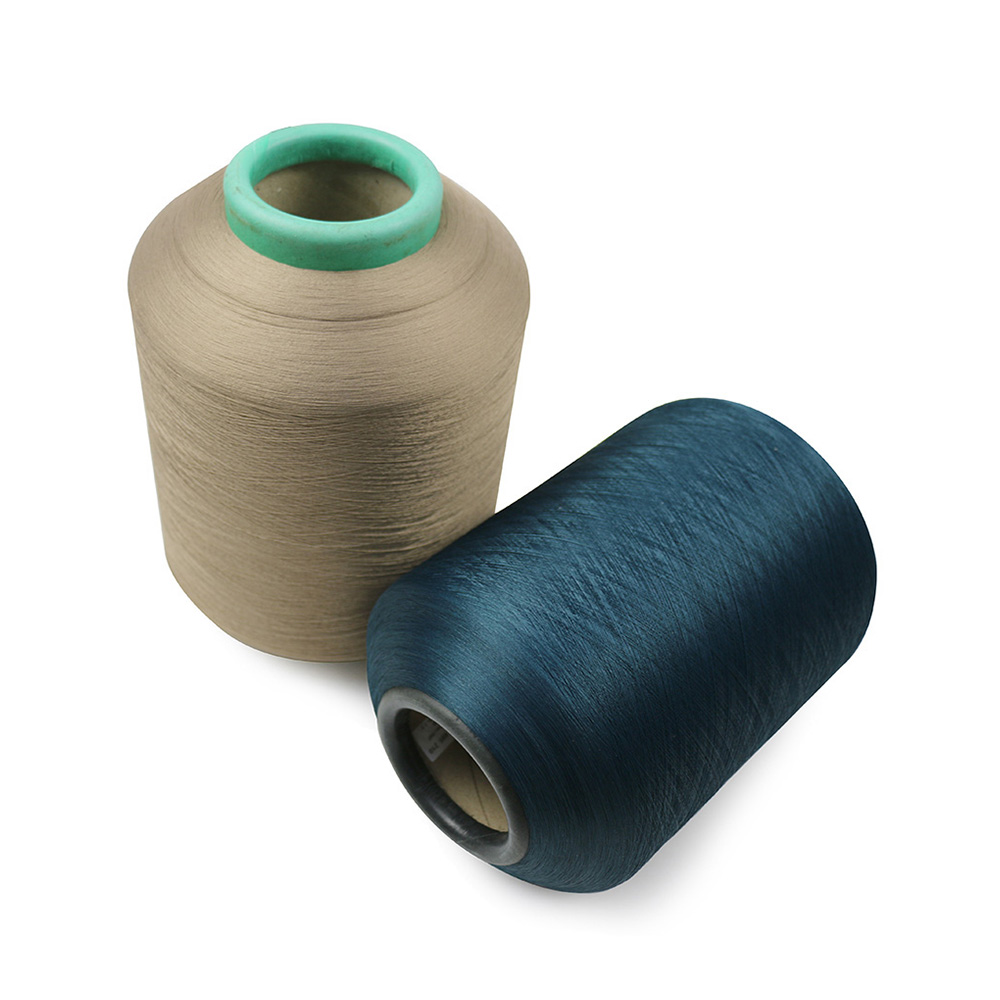If you are interested in some of our products, please feel free to visit our website or contact us for detailed information.

Mechanical covered yarn is typically made by combining two different types of fibers or yarns through a mechanical process. The primary materials used in making Mechanical covered yarn are:
1.Core Yarn: This is the inner component of the Mechanical covered yarn and provides the structure and strength. Core yarn can be made from various materials such as cotton, polyester, nylon, rayon, or any other synthetic or natural fibers. The choice of core yarn depends on the desired characteristics and properties of the final yarn product.
2.Covering Yarn: This is the outer component that wraps around the core yarn. It can be made from different materials than the core yarn, such as elastane (spandex), nylon, polyester, or other flexible and stretchable fibers. The covering yarn gives Mechanical covered yarn its unique properties, such as elasticity and stretchability.
The process of making Mechanical covered yarn involves the following steps:
1. Core Yarn Preparation:
The core yarn serves as the central structural component of the Mechanical covered yarn. It can be made from various materials, such as natural fibers like cotton, wool, or silk, or synthetic fibers like polyester, nylon, or rayon. The selection of core yarn depends on the desired characteristics of the final Mechanical covered yarn. For instance, cotton core yarns may provide softness and breathability, while synthetic core yarns offer strength and durability.
The core yarn can be a single continuous filament or a combination of multiple fibers twisted together to create a yarn bundle. The twist level and thickness of the core yarn also influence the final properties of the Mechanical covered yarn.
2. Covering Yarn Preparation:
The covering yarn wraps around the core yarn, providing the Mechanical covered yarn with its stretch and elasticity. The choice of materials for the covering yarn is critical in determining the overall performance of the Mechanical covered yarn. Common materials used for the covering yarn include elastane (spandex), polyester, nylon, and other stretchable fibers.
Elastane (spandex) is particularly popular due to its excellent stretch and recovery properties. The covering yarn is often manufactured as a single filament or multifilament yarn to maximize flexibility and improve elasticity.
3. Feeding and Twisting:
In the manufacturing process, both the core yarn and covering yarn are fed into a twisting machine simultaneously. The machine combines the two yarns and twists them together to form the Mechanical covered yarn. The degree of twist applied depends on the desired level of stretch and elasticity required for the end product.
During the twisting process, the covering yarn wraps around the core yarn at regular intervals, securing it in place and creating the characteristic structure of the Mechanical covered yarn.
4. Heat Setting (Optional):
In some cases, after the Mechanical covered yarn is produced, it may undergo a heat-setting process. Heat setting involves subjecting the yarn to controlled heat and tension to stabilize its structure and ensure that the twist and stretch properties are locked in place.
Heat setting is often used to enhance the yarn's dimensional stability, reduce shrinkage, and improve its overall performance during subsequent fabric or garment production.
5. Winding and Packaging:
After the Mechanical covered yarn is manufactured, it is wound onto spools or cones for further processing or distribution. The spools are then packaged and shipped to manufacturers who will incorporate the Mechanical covered yarn into their products.
The Mechanical covered yarn can be used in various textile applications, such as knitting, weaving, hosiery production, and sewing, where its stretch and recovery properties are desirable.
The mechanical covering process allows for a wide range of variations in terms of yarn properties, including different levels of stretch, strength, and texture.


Mechanical covered yarn (SCY) is a type of yarn that continuously rotates and wraps the wrapped fiber filament onto the uniformly drawn core spandex. It is twisted and has a twist (TPM), and its main characteristic is its flat and straight fabric style.

 English
English Español
Español








